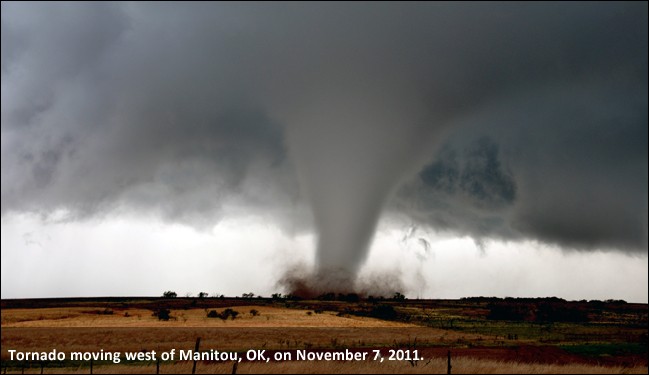As we continue through severe weather season, we must be aware of severe weather threats and what precautions we must take before, during, and after severe weather strikes!
First off, there are two distinct levels of severe weather advisories: watches and warnings. Watches are implemented when conditions are favorable for severe weather, while warnings are implemented when severe weather is imminent or occurring. For example, a tornado watch means atmospheric conditions are conducive for tornadoes, but that doesn’t mean a tornado will occur. A tornado warning means a tornado is about to touch down or is already on the ground and immediate action is required.

Image courtesy of NWS (http://www.nws.noaa.gov/os/severeweather/)
Even though a severe weather watch may not produce severe weather, it’s important to pay attention to the weather in case a warning occurs. It’s always good to have a general emergency plan set up to ensure you know what to do in the event of a warning. It doesn’t hurt to practice drills so you know that your plan works and can be quickly implemented.
If a tornado warning is set in place, go to the lowest level or most interior part of the building you are in and avoid any rooms with windows. You want to place as many walls as possible between yourself and the approaching tornado. Remain in your safe spot until the warning ends and then cautiously exit and avoid any debris.

Image courtesy of FEMA
If you get stuck in a torrential downpour or come across a water-covered roadway after a heavy rainstorm, you may think you can drive or walk through the water and you’ll be fine. It may seem like an easy task, but only 6 inches of quickly flowing water can sweep you away or make your car lose control and a foot of water will float most vehicles. Even if it’s inconvenient, turn around and find an alternative route to your destination. For more information on flood safety, check out the National Weather Service’s flood safety page.
To stay up to date on watches and warnings, you can do a number of things to receive immediate alerts. You can either subscribe to your school or county’s emergency alert system, frequently check any weather apps you may have, or purchase a weather radio that will go off in the event of a warning. The best way to ensure your safety is to frequently check forecasts and be diligent about implementing any severe weather plans you may have. If you’re local to the DMV, make sure you check our website for outlooks and updates!
